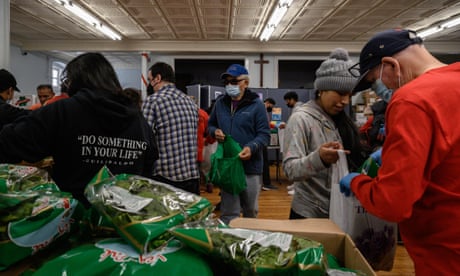- by foxnews
- 10 Mar 2025
One in 10 US households struggles to afford enough food, study finds
One in 10 US households struggles to afford enough food, study finds
- by theguardian
- 08 Sep 2022
- in news

One in 10 American households struggled to feed their families last year, with more than 5 million families missing meals and cutting portions due to poverty, new government research reveals.
In most circumstances, adults went without to ensure the children were adequately fed, but for 0.7% of extremely poor households there was not enough food for anyone. In the richest country in the world, children in 274,000 American households went hungry, skipped meals or did not eat for entire days because there was not enough money to buy food.
For some groups, things got worse last year compared to 2021, according to the USDA survey that found higher levels of food insecurity in adult-only households especially for women and elderly people living alone. But there were year-on-year drops for several population sub-groups, including households with children under six, single mothers with children, Black families and households in the south.
But a lot has changed this year, and even these small gains could be reversed.
Households are also under more pressure as states roll back pandemic-linked financial support such as free school meals for every child, child tax credits and many states now stopping expanded food stamp benefits.
Food insecurity and unequal access to grocery stores play a major role in a range of public health epidemics, including obesity, diabetes, heart disease and tooth decay, as unhealthy processed foods with high levels of fat and sugar are often cheaper and more accessible than healthier options.
Every month, millions of Americans are forced to choose between paying for rent, healthcare, bills, childcare and groceries, because they are not paid a living wage. One in four Americans rely on federal nutrition assistance such as food stamps and free school lunches. The rates are higher among Indigenous, Black and Latino households.
Food insecurity has never fallen below 10% since 2000, peaking during the aftermath of the 2007 housing market collapse. Older Americans are still experiencing higher levels of food insecurity than before the Great Recession.
- by foxnews
- descember 09, 2016
Ancient structure used for cult 'rituals' discovered by archaeologists
A Neolithic Timber Circle was discovered by archeologists in Denmark resembling the historical landmark Stonehenge in the U.K. It is open to be viewed by the public.
read more


